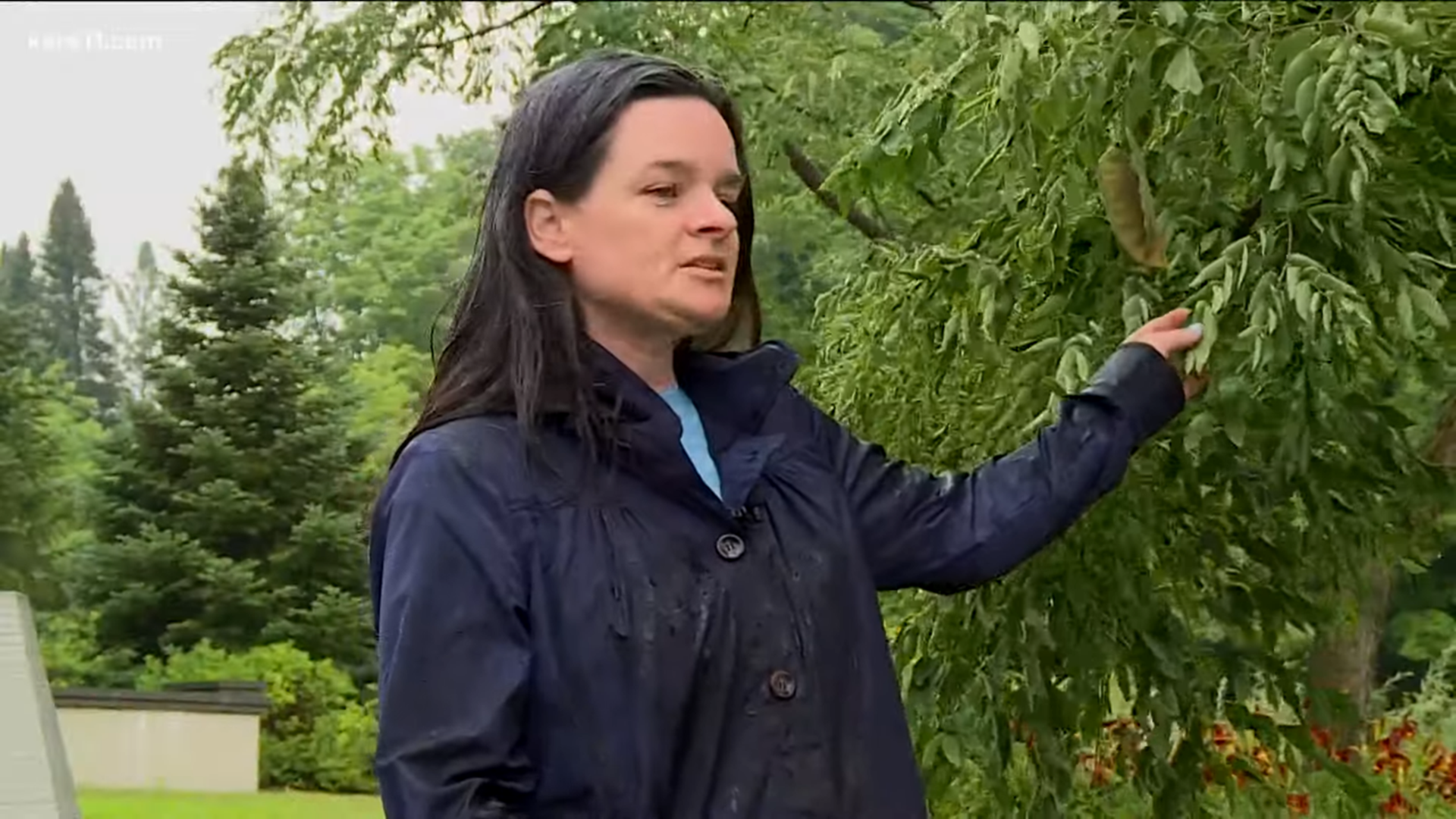CHASKA, Minn. — A good, soaking rain was definitely a welcomed guest at the University of Minnesota Landscape Arboretum on Wednesday, but it wasn't enough to completely relieve the stress of the ongoing drought, especially on the trees.
"I feel a little better, but only a little," said Erin Buchholz, who serves as the arboretum's Integrated Pest Management Specialist. "My job is to look for plants that don't look like they should, and then I need to try and figure out what's wrong with them."
Recently, Buchholz says the drought has been the biggest pest of all, leading to issues that have threatened trees in many ways.
During a tour with KARE11, Buchholz pointed out an Ohio buckeye tree that has already lost nearly all of its leaves.
"Unfortunately, in an effort to save itself, it shed its leaves," she said.
That might be enough for the buckeye to survive this drought, but she says small trees are a bigger concern.
"If it's been in the ground less than five years, that's when I start to worry about it," Buchholz said.
She says steady, prolonged watering helped save a small ginkgo tree, but it's still exhibiting signs of stress that most people should look out for.
"We have a little bit of leaf scorch, starting at the margins," pointing out the brown patches on several leaves. "That's environmental. That's from heat. That's from drought."
In addition to regular watering, she says placing mulch around the base of newer trees can help trap moisture and protect them from mower damage.
"You want a wood chip about two to four inches deep around the base of the tree," She said. "But you don't want the wood chips to be right up against the trunk. You still want to scoot them out an inch or two so you're not actually burying the trunk of the tree."
Even if you have a large tree with an established root system, Buchholz says the extreme shifts in weather in recent years – several wet summers and cold, dry winters – have taken a toll that could show up in several ways right now.
"This Kentucky coffee tree, for instance, this is its normal response to extreme heat and drought conditions. It curls it's leaves up," she said. "This one right here is particularly stressed out, so it's doing it as a way to conserve its own water. You can feel the leaves and its not wilted, there's still plenty of water moving through the leaf, it just curls up to protect itself a little bit more so it doesn't lose as much of its moisture, or it doesn't expose itself as much to the hot sun."
And if a big tree is showing signs of distress, she says it's a good idea to be wary of severe storms that might bring high winds or lightning, especially in the current drought.
"It's kind of like if you're going in for surgery, you don't want to already want to be under stress from some sort of illness," Buchholz said. "If you do notice any kind of lightning strikes or damage to your trees, make sure you are getting them adequate water to reduce their stress, that if you do have to take a limb off or cut the tree in another way, you're not adding to its stress."
If you have drought or damage concerns about a tree, large or small, Buchholz says you can begin by contacting the University of Minnesota Extension's "Ask a Master Gardener" online or by calling 612-301-7590.
The Extension service also has information on how to hire a tree care professional.

